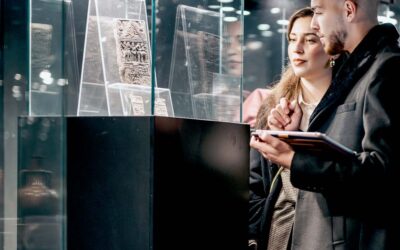Economic Disaster Planning for Museums

Rachael Cristine Woody
At the time of writing this post we are seeing coronavirus impacting life as we know it throughout the US and Canada. The pandemic crisis is unprecedented in many ways: it spans the globe, it easily infects many, the period of danger is many months long, and it’s brought economies and institutions to the brink of collapse.
What Disaster Use to Mean for Museums
For museums, disaster planning was limited to short-term natural or man-made disasters that impact our collection, us as humans, or both. I’ve written and reviewed disaster plans for fire, flood, active shooter, mold, climate change, power outage, earthquake, and tsunami. And now we’re facing a new disaster. No, not the pandemic. (Though operation plans for the museum and staff should be created for when this happens again). I’m talking about the economic disaster that came swiftly on the heels of the pandemic as a result of entire countries shutting down all non-essential work.
Economic Disaster
Economic recessions are not new, with that in mind—and in light of the lessons learned in 2008—we should’ve been more prepared for this current economic crisis. And yet, here we are with the American Alliance of Museums forecasting that “30 percent of museums, mostly in small and rural communities, will not re-open without significant and immediate emergency financial assistance.”
Where is the Economic Disaster Planning?
In the wake of coronavirus hitting North America, I’ve had many “face to face” conversations with colleagues displaced from their museums and adapting their new normal of collections work. We were all caught off-guard by this newly incited economic crisis and our capacity to deal with it is limited as we’re still grappling with the current pandemic crisis. In my subsequent research online, I have yet to find any museum resources for how to plan for (and hopefully mitigate) an economic disaster. This is a gaping hole in our field, a hole we inexplicably didn’t fill in 2008 with The Great Recession.
What We’re Learning Right Now
Unfortunately, we’re learning how to deal with this museum disaster in real-time. As organizations that run on in-person attendance, special events hosting, and generous patrons, we are incredibly susceptible to any crisis that requires the shuttering of our buildings. There is limited income to bring in when your institution’s primary monetary activities require people be there in person. Over the past few weeks we’ve seen museums close, layoff up to 90% of staff, and call for donations (during a time when 3.3 million Americans filed for unemployment). These decisions were quickly made for short-term relief and won’t put off what’s coming: bankruptcy.
What We Need to Do for Next Time
We are too late to plan for this economic disaster. But, we’re not too late for the next one. (There will always be a “next one”). With time on our side we need to do the following:
- Run through a scenario of disasters that would close a museum (including a prolonged pandemic) and determine which activities are essential and therefore what staff are essential. Doing this ahead of time also helps to emotionally prepare staff for who will be laid off or furloughed.
- Based on an average of salaries for essential staff, run the numbers on how much it will cost to keep the essential staff working for 1, 3, and 6 months. Add in any operating costs that may or may not be shut down during this time, such as: utilities, mortgage, contracted items (for example the security system or software), employee benefits, etc.
- Based on those emergency operating numbers, update the museum’s operating budget to include an “Emergency Disaster Operating Fund”. Each year a portion of the operating budget will be saved to build an Emergency Disaster Operating Fund. Note: This is different than a Reserve Fund or any other “emergency” fund. A Reserve Fund is for one-time updates for the facilities. An emergency fund is for brief, one-time, physically damaging events. Museums need an Emergency Disaster Operating Fund that is grown over time to cover the operating costs of the museum for 3 to 6 months.
Conclusion
It’s true. We’re too late to plan for this disaster. But we absolutely need to be better prepared for the next one. It could make the difference between bankruptcy and survival.

Rachael Cristine Woody
Consultant, author, and blogger Rachael Cristine Woody advises on museum strategies, collections management, grant writing and the future of museums for a wide variety of clients. Read Ms. Woody’s other blog posts and check out Lucidea’s unrivaled CMS, Argus, that empowers museum workers and virtual visitors to say connected, no matter what.
Similar Posts
From Preservation to Resilience: An Introduction to Building Resilient Digital Collections
Preserving a digital collection is a job that is never done. But what if we shifted our focus from preservation to building digital resilience?
Museum Collections Online: Digital Storytelling Blog Series Roundup
An overview of 10 blog post series that highlight how museums can leverage online collections and digital storytelling platforms, strategies, tools, and best practices.
How Museums Can Broaden Access and Improve Accessibility with Digital Storytelling
Museum expert Rachael Cristine Woody explains how digital storytelling expands access and improves accessibility of museum collections with inclusive multimedia formats.
How to Increase Museum-Goer Engagement and Collection Relevancy with Digital Storytelling
Boost museum engagement and collection relevancy with digital storytelling. Learn how multi-vocal stories connect audiences and expand online reach.




Leave a Comment
Comments are reviewed and must adhere to our comments policy.
0 Comments